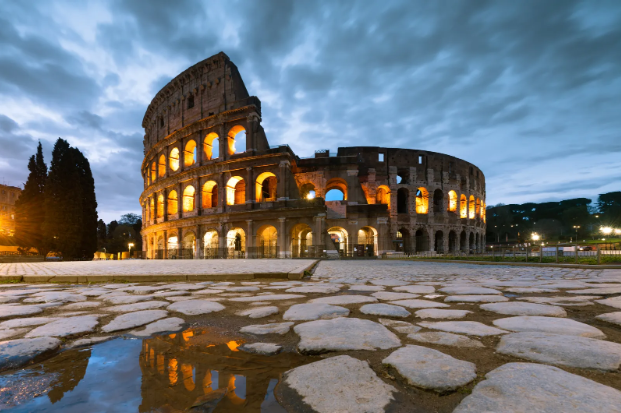Ancient Rome Architecture: A Journey Through Time
Ancient Rome architecture is famous around the world. It is known for its amazing buildings, bridges, and roads. The Romans built many structures that were not only beautiful but also very strong. This architecture has influenced many styles of building in different countries even today. When we look at Roman architecture, we see their skill and creativity.
This article will explore the key features of ancient Roman architecture, the most important buildings, and the materials they used. We will also talk about how their designs changed over time. If you love history and art, understanding Roman architecture will take you on an exciting journey into the past!
Key Features of Ancient Rome Architecture
Ancient Roman architecture has some unique features that make it stand out. One of the most important elements is the use of arches. Arches allow buildings to support more weight. This means that Roman structures could be larger and taller than those built before. The arch is a curved shape that spreads out the weight evenly. Romans often used arches in bridges and aqueducts.
Another key feature is the use of concrete. Romans invented a special type of concrete that was very strong and could set underwater. This allowed them to build many types of structures, like roads and harbors, that have lasted for centuries. They also used bricks and stone, making their buildings durable and long-lasting.
Columns were also significant in Roman architecture. Columns are tall, vertical structures that support roofs or other parts of buildings. The Romans took inspiration from Greek architecture and created different styles of columns, such as the Doric, Ionic, and Corinthian. These columns added beauty and elegance to their buildings.
Overall, the key features of ancient Roman architecture show the Romans’ ability to innovate and create stunning designs that have influenced architecture for thousands of years.
Important Buildings in Ancient Rome
There are many important buildings in ancient Rome architecture that showcase the skill of Roman builders. One of the most famous is the Colosseum. This giant amphitheater could hold thousands of people. It was used for games, gladiator fights, and other events. The Colosseum features a complex system of arches and vaults, which made it possible to support such a large structure.
Another significant building is the Pantheon. The Pantheon has a large dome and is known for its incredible design. The dome is made of concrete and has a large opening at the top called the oculus. This oculus allows light to enter and makes the interior feel open and spacious. The Pantheon is a great example of how the Romans used architecture to create a sense of awe.
The Forum Romanum, or Roman Forum, is another essential structure. It was the center of public life in ancient Rome. Here, people gathered for politics, shopping, and social events. The Forum was filled with temples, government buildings, and markets. It shows how architecture was used to bring people together.
These important buildings highlight the achievements of ancient Roman architecture. They demonstrate how Romans used design and engineering to create spaces that served various purposes while being visually impressive.
The Materials Used in Ancient Rome Architecture
The materials used in ancient Roman architecture were crucial to the strength and beauty of their buildings. As mentioned earlier, concrete was one of their most important inventions. Roman concrete was made from a mixture of volcanic ash, lime, and water. This unique combination made it very strong and allowed the Romans to build structures that could withstand the test of time.
In addition to concrete, the Romans also used stone and brick. They often used local materials, which made it easier to build and reduced costs. Marble was another popular material, especially for temples and important buildings. Marble added a sense of luxury and beauty to their architecture.
The use of columns also played a role in the materials chosen for ancient Roman architecture. The Romans constructed columns from stone or brick and sometimes decorated them with marble. This gave their buildings an elegant appearance and showed off the craftsmanship of their builders.
Overall, the materials used in ancient Roman architecture reflect the Romans’ understanding of engineering and their desire to create beautiful structures. The combination of concrete, stone, and decorative elements helped their buildings last for centuries.
The Evolution of Roman Architecture
Ancient Roman architecture evolved over time. In the beginning, Roman buildings were heavily influenced by Greek architecture. They adopted the use of columns, but over time, they developed their own unique style. As the Roman Empire expanded, they encountered different cultures and styles, which influenced their architectural designs.
During the Republic period (around 509 BC to 27 BC), Romans built simple structures like temples and basilicas. However, as the Empire grew, so did their ambition. The Imperial period (27 BC to 476 AD) saw the construction of grand buildings like the Colosseum and the Pantheon. This era is characterized by the use of large spaces, domes, and intricate details.
After the fall of the Roman Empire, their architectural styles influenced later periods, such as the Byzantine and Renaissance styles. Many techniques used in ancient Roman architecture were rediscovered and adapted in these later periods. The principles of symmetry, proportion, and the use of arches and domes continue to be important in modern architecture.
The evolution of ancient Roman architecture shows how cultures can adapt and grow. It also highlights the lasting impact of Roman design on architecture throughout history.
Conclusion
In conclusion, ancient Roman architecture is a remarkable part of history. The innovative use of materials like concrete and the unique features such as arches and columns allowed the Romans to build impressive structures. Their most famous buildings, like the Colosseum and the Pantheon, continue to inspire architects today.
The legacy of ancient Roman architecture can still be seen in many places around the world. It has influenced countless designs and remains a crucial aspect of architectural education. Exploring the wonders of Roman architecture helps us understand the creativity and engineering skills of the ancient Romans.
FAQs
Q: What are some key features of ancient Roman architecture?
A: Key features include arches, concrete, and decorative columns.
Q: What is the Colosseum?
A: The Colosseum is a famous ancient Roman amphitheater used for games and events.
Q: What materials did Romans use for their buildings?
A: Romans primarily used concrete, stone, brick, and marble.
Q: How did Roman architecture evolve over time?
A: Roman architecture evolved from simple structures to grand buildings, influenced by other cultures.
Q: Why is ancient Roman architecture important today?
A: It has influenced many architectural styles and continues to inspire modern designs.


